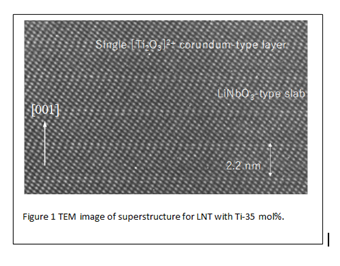
Hiromi Nakano
Toyohashi University of Technology, Japan
Biography
Hiromi Nakano is working as a Professor in the Department of Environmental and Life Sciences, and Cooperative Research Facility Center at Toyohashi University of Technology. She has completed her B S, M S and Dr. (Eng.) at Toyohashi University of Technology, Japan in 1981, 1983 and 2000, respectively. She joined Murata Manufacturing Co., Ltd. in 1983 and transferred to Ryukoku University in 1989. She joined the Cooperative Research Facility Center at Toyohashi University of Technology as an Associate Professor in 2009 and currently, she is working as a Professor and Presidential Advisor (Gender Equality). In 2010, she received the 64th CerSJ Award for Academic Achievements in ceramic science and technology. Her current interest is in the synthesis of new phosphors and characterization of ceramic materials using a transmission electron microscope to control the material properties and for the design of new materials.
Abstract
In the Li2O-M2O5-TiO2 system, Li1+x-yM1-x-3yTix+4yO3 (M = Nb, or Ta, 0.06£ x£ 0.33, 0£y£0.175 (LMT) forms with a superstructure, and this is known as a smart material. The superstructure is formed by periodical insertion of an intergrowth layer of corundum-type [Ti2O3]2+ in a matrix having a trigonal structure during the grain growth for a long sintering time. To apply this unique structure as a host material of phosphor, new phosphors have been investigated based on LMT or related structures made by a conventional electric furnace and millimeter-wave heating. Rare earth (RE3+: Eu, Er, Tb, Tm, or Dy) doped LMT phosphors with various emitted colors were successfully synthesized. Especially, we synthesized a new red phosphor based on the quaternary Li1+x (Ta1−zNbz)1−xTixO3 (LTNT, 0≤x≤0.25, 0≤ z≤1.0) solid solution. An Eu3+-doped LTNT has been prepared in a conventional electric furnace. Interestingly, a bright red emission due to the hypersensitive 5D0-7F2 transition in Eu3+ was observed under direct excitation of the 4f electron at 400 nm. In the LTNT host material, the most effective activator was found to be Eu ion and an internal quantum efficiency of 98% was achieved. We found that the high PL intensity was closely related to the polyhedral structure of the [Li (Eu) O12] in the host material. Still more, toward application of the unique qualities of an electro-ceramic, we fabricated oriented the solid solution for Nb system (LNT) balk ceramics by slip casting in a strong magnetic field of 12 T using various sizes of particles. Anisotropic electric properties were found along the c-axis, which were caused by a superstructure. We first clarified the mechanism showing that the anisotropic Qf value was caused by the anisotropic electron conductivity and the anisotropic bonding strength in the superstructure.
